Simon Klüttermann
Rare anomalies require large datasets: About proving the existence of anomalies
Aug 13, 2025Abstract:Detecting whether any anomalies exist within a dataset is crucial for effective anomaly detection, yet it remains surprisingly underexplored in anomaly detection literature. This paper presents a comprehensive study that addresses the fundamental question: When can we conclusively determine that anomalies are present? Through extensive experimentation involving over three million statistical tests across various anomaly detection tasks and algorithms, we identify a relationship between the dataset size, contamination rate, and an algorithm-dependent constant $ \alpha_{\text{algo}} $. Our results demonstrate that, for an unlabeled dataset of size $ N $ and contamination rate $ \nu $, the condition $ N \ge \frac{\alpha_{\text{algo}}}{\nu^2} $ represents a lower bound on the number of samples required to confirm anomaly existence. This threshold implies a limit to how rare anomalies can be before proving their existence becomes infeasible.
Polyra Swarms: A Shape-Based Approach to Machine Learning
Jun 16, 2025Abstract:We propose Polyra Swarms, a novel machine-learning approach that approximates shapes instead of functions. Our method enables general-purpose learning with very low bias. In particular, we show that depending on the task, Polyra Swarms can be preferable compared to neural networks, especially for tasks like anomaly detection. We further introduce an automated abstraction mechanism that simplifies the complexity of a Polyra Swarm significantly, enhancing both their generalization and transparency. Since Polyra Swarms operate on fundamentally different principles than neural networks, they open up new research directions with distinct strengths and limitations.
Unsupervised Surrogate Anomaly Detection
Apr 29, 2025Abstract:In this paper, we study unsupervised anomaly detection algorithms that learn a neural network representation, i.e. regular patterns of normal data, which anomalies are deviating from. Inspired by a similar concept in engineering, we refer to our methodology as surrogate anomaly detection. We formalize the concept of surrogate anomaly detection into a set of axioms required for optimal surrogate models and propose a new algorithm, named DEAN (Deep Ensemble ANomaly detection), designed to fulfill these criteria. We evaluate DEAN on 121 benchmark datasets, demonstrating its competitive performance against 19 existing methods, as well as the scalability and reliability of our method.
Exploring the Impact of Outlier Variability on Anomaly Detection Evaluation Metrics
Sep 24, 2024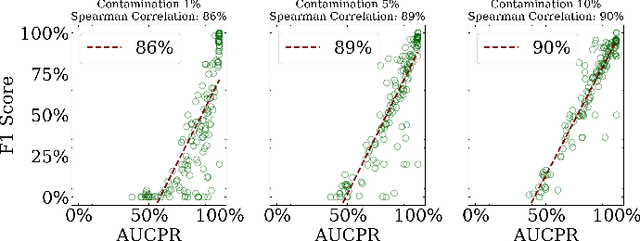
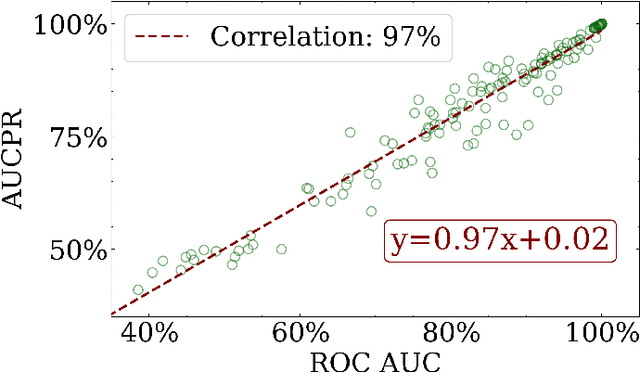
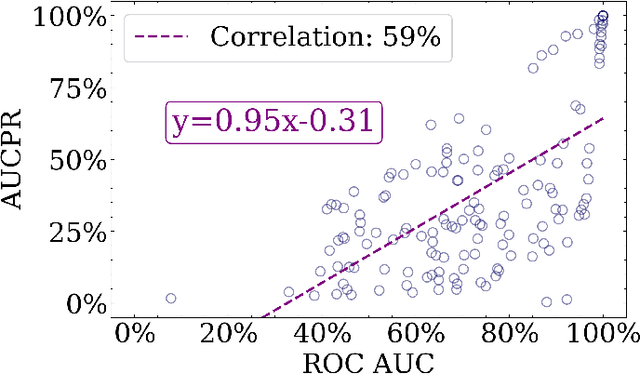
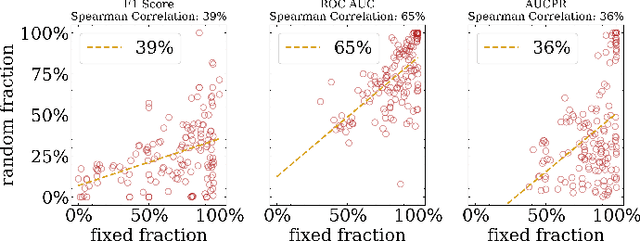
Abstract:Anomaly detection is a dynamic field, in which the evaluation of models plays a critical role in understanding their effectiveness. The selection and interpretation of the evaluation metrics are pivotal, particularly in scenarios with varying amounts of anomalies. This study focuses on examining the behaviors of three widely used anomaly detection metrics under different conditions: F1 score, Receiver Operating Characteristic Area Under Curve (ROC AUC), and Precision-Recall Curve Area Under Curve (AUCPR). Our study critically analyzes the extent to which these metrics provide reliable and distinct insights into model performance, especially considering varying levels of outlier fractions and contamination thresholds in datasets. Through a comprehensive experimental setup involving widely recognized algorithms for anomaly detection, we present findings that challenge the conventional understanding of these metrics and reveal nuanced behaviors under varying conditions. We demonstrated that while the F1 score and AUCPR are sensitive to outlier fractions, the ROC AUC maintains consistency and is unaffected by such variability. Additionally, under conditions of a fixed outlier fraction in the test set, we observe an alignment between ROC AUC and AUCPR, indicating that the choice between these two metrics may be less critical in such scenarios. The results of our study contribute to a more refined understanding of metric selection and interpretation in anomaly detection, offering valuable insights for both researchers and practitioners in the field.
About Test-time training for outlier detection
Apr 04, 2024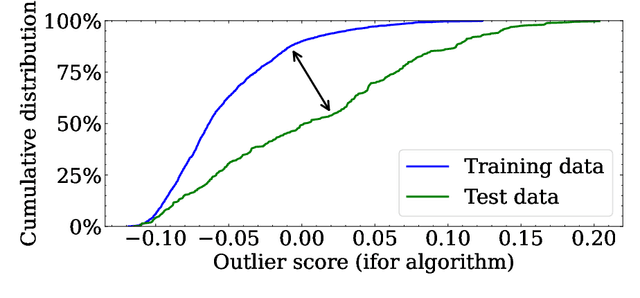
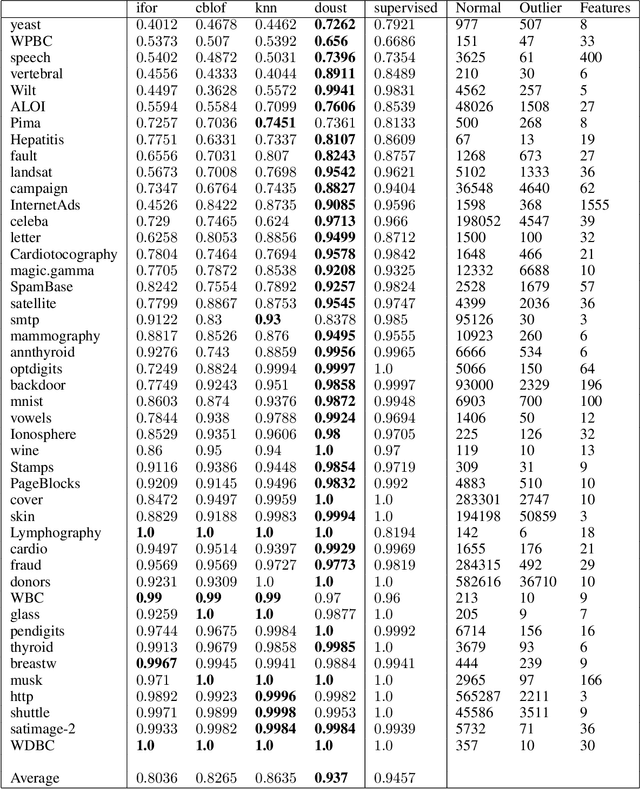
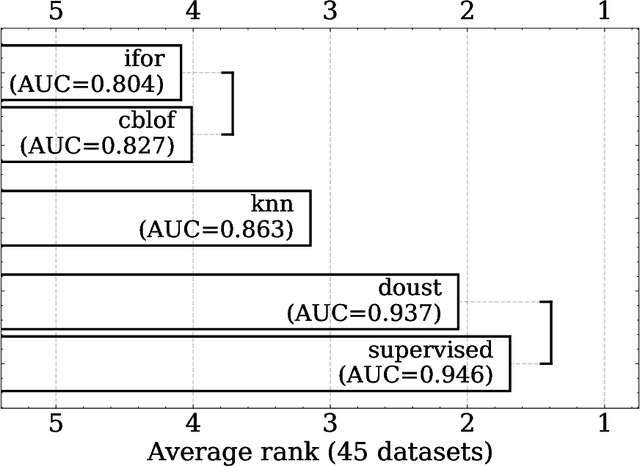
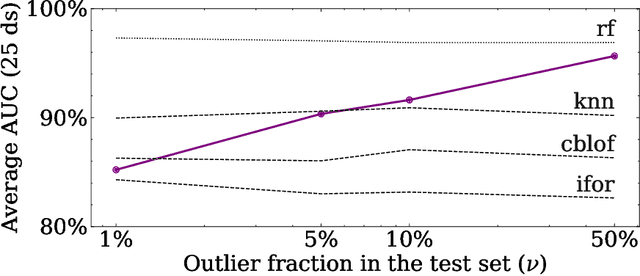
Abstract:In this paper, we introduce DOUST, our method applying test-time training for outlier detection, significantly improving the detection performance. After thoroughly evaluating our algorithm on common benchmark datasets, we discuss a common problem and show that it disappears with a large enough test set. Thus, we conclude that under reasonable conditions, our algorithm can reach almost supervised performance even when no labeled outliers are given.
On the Effectiveness of Heterogeneous Ensemble Methods for Re-identification
Mar 19, 2024



Abstract:In this contribution, we introduce a novel ensemble method for the re-identification of industrial entities, using images of chipwood pallets and galvanized metal plates as dataset examples. Our algorithms replace commonly used, complex siamese neural networks with an ensemble of simplified, rudimentary models, providing wider applicability, especially in hardware-restricted scenarios. Each ensemble sub-model uses different types of extracted features of the given data as its input, allowing for the creation of effective ensembles in a fraction of the training duration needed for more complex state-of-the-art models. We reach state-of-the-art performance at our task, with a Rank-1 accuracy of over 77% and a Rank-10 accuracy of over 99%, and introduce five distinct feature extraction approaches, and study their combination using different ensemble methods.
 Add to Chrome
Add to Chrome Add to Firefox
Add to Firefox Add to Edge
Add to Edge